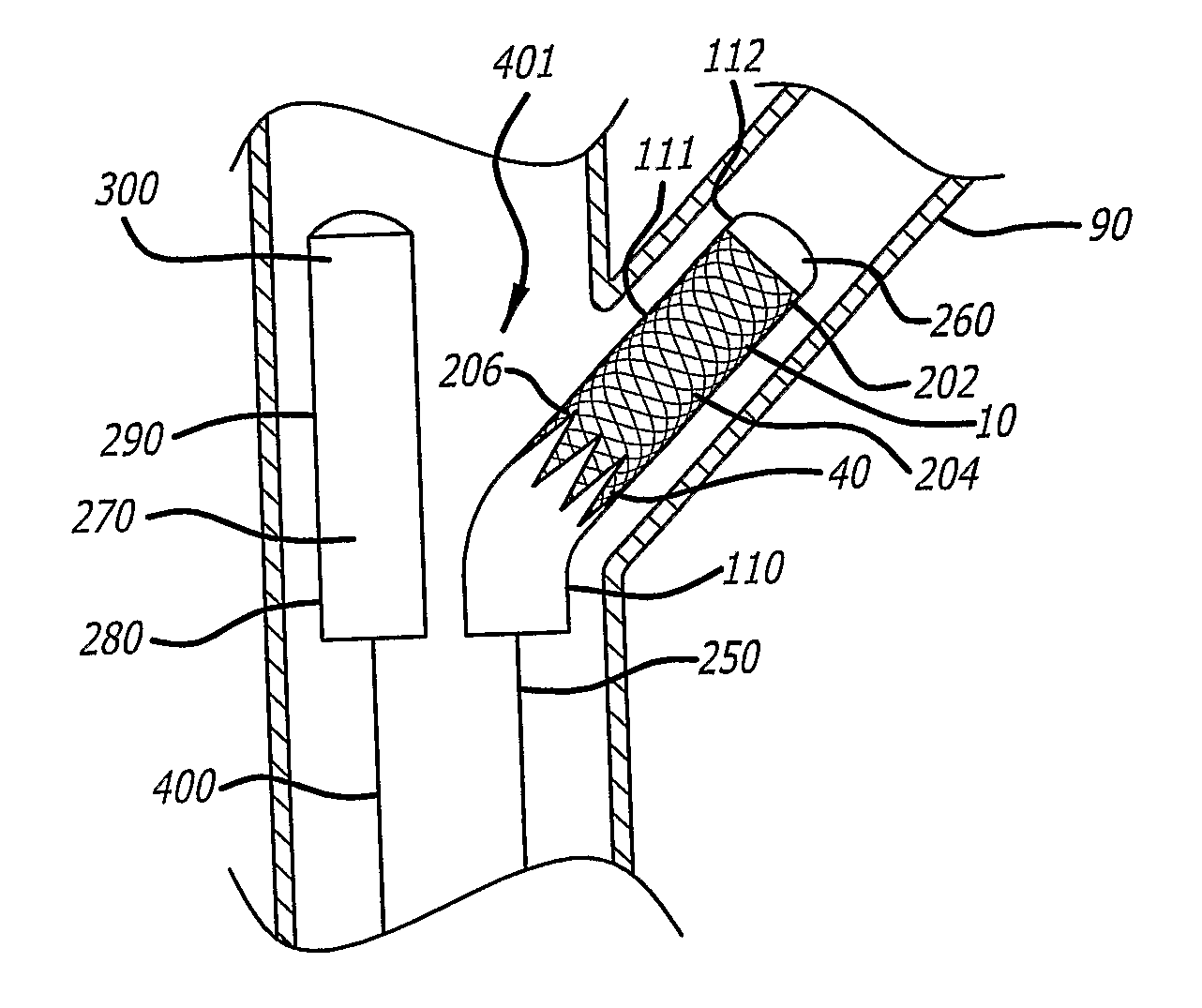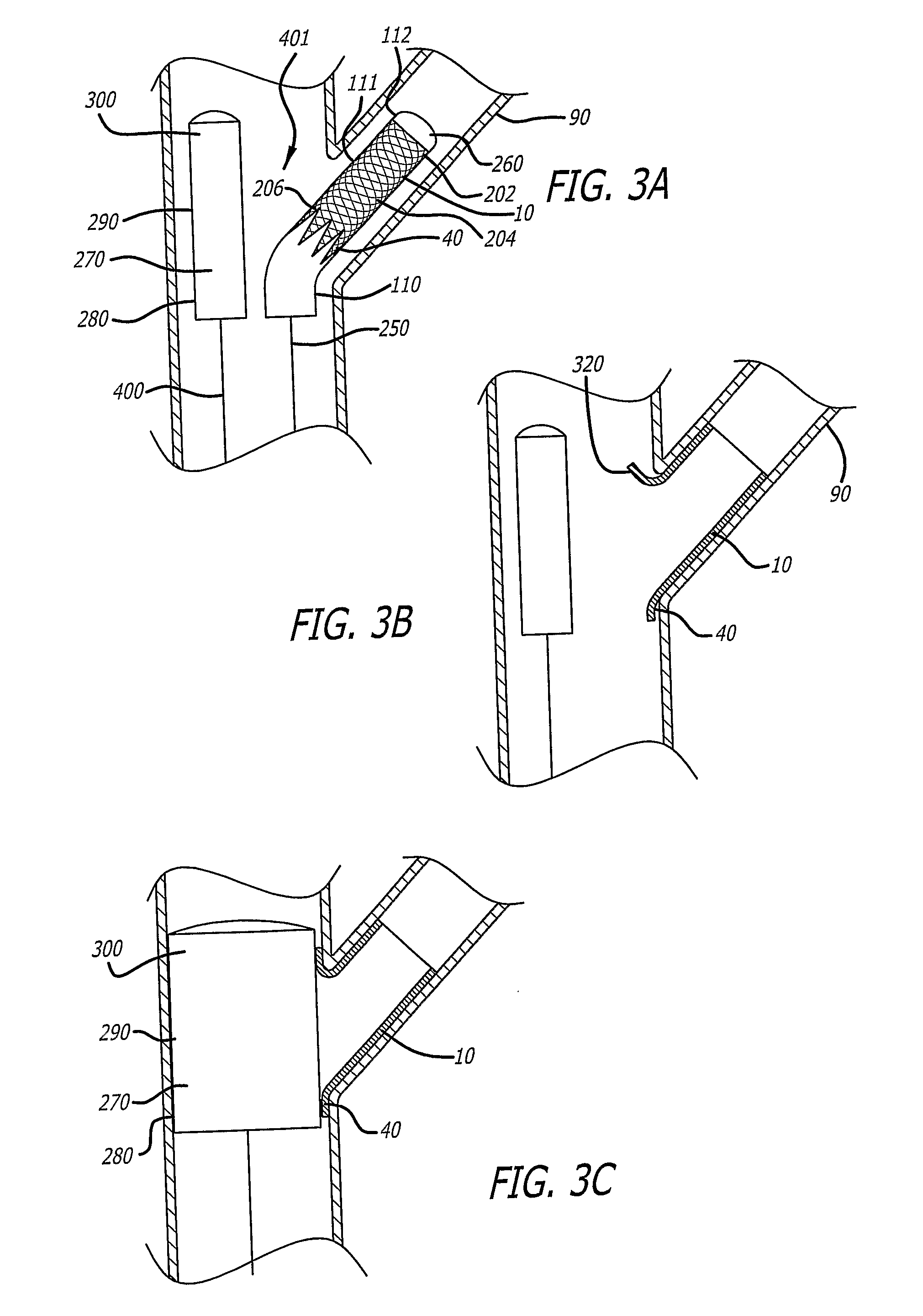System and method for deploying a proximally-flaring stent
a proximal flap and stent technology, applied in the direction of catheters, prostheses, blood vessels, etc., can solve the problems of inability to gating, inability to restore patency around ostiums, and inability to gating, so as to achieve the effect of restoring patency at the lesion
- Summary
- Abstract
- Description
- Claims
- Application Information
AI Technical Summary
Benefits of technology
Problems solved by technology
Method used
Image
Examples
Embodiment Construction
[0040]The phrases “main vessel” and “main artery” mean any vessel or duct within the body that has one or more branches extending off of it. The use of the term “main” may suggest that the “main artery” is more substantial or bigger than its branch or branches, however, this relationship is not required. A “main vessel” or “main artery” can be larger than, smaller than, or equal in size to its branches.
[0041]The term “branch” and the phrase “side branch” mean any vessel or duct within the body that finds its origination point at another vessel or duct within the body. A branch can be larger than, smaller than, or equal in size to its originating lumen.
[0042]The term “body” refers to the physical substance of a human or animal, living or dead.
[0043]Previously-used stents did not provide a means to treat a lesion found primarily at an ostium and within the side branch of an artery when the branch could only be approached from the direction of the main artery (such as in the coronary a...
PUM
| Property | Measurement | Unit |
|---|---|---|
| elastic | aaaaa | aaaaa |
| bioactive | aaaaa | aaaaa |
| pressures | aaaaa | aaaaa |
Abstract
Description
Claims
Application Information
 Login to View More
Login to View More - R&D
- Intellectual Property
- Life Sciences
- Materials
- Tech Scout
- Unparalleled Data Quality
- Higher Quality Content
- 60% Fewer Hallucinations
Browse by: Latest US Patents, China's latest patents, Technical Efficacy Thesaurus, Application Domain, Technology Topic, Popular Technical Reports.
© 2025 PatSnap. All rights reserved.Legal|Privacy policy|Modern Slavery Act Transparency Statement|Sitemap|About US| Contact US: help@patsnap.com



